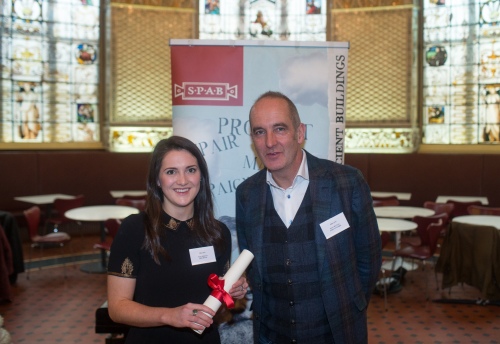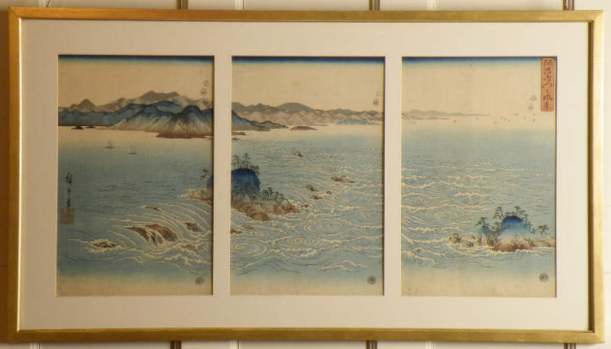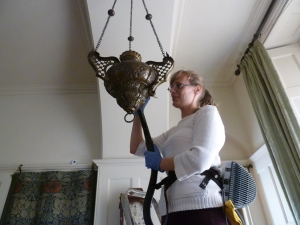With the weather finally starting to look like spring has arrived and Easter just around the corner, this month I thought I’d choose an object featuring a traditional symbol of new life.
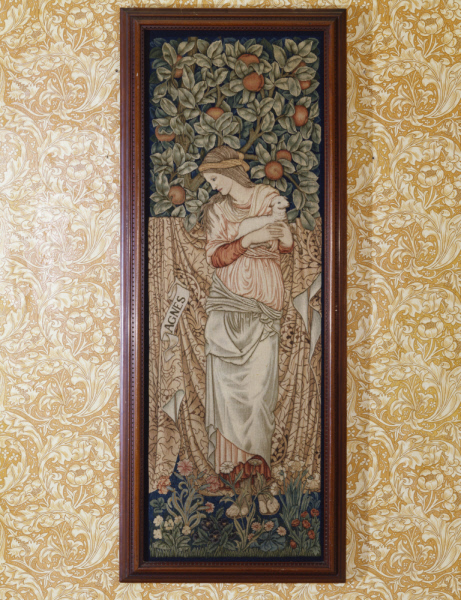
Morris & Co. Tapestry of St Agnes
This is the tapestry of St Agnes at the top of the stairs. She is often depicted holding a lamb to represent her purity as a virgin saint, and in fact her name comes from the Greek ‘hagnē,’ meaning chaste. Agnes is also very similar to ‘agnus,’ the Latin word for lamb. She was martyred in Rome in AD304 for her Christian beliefs and is the patron saint of engaged couples, gardeners and girls. Every year on her feast day, 21 January, two lambs are blessed at her church in Rome.

Stained glass window from the Church of St Helen, Welton
This particular design was adapted from one of a pair of stained glass window by Edward Burne-Jones which can be seen at the Church of St Helen in Welton, Yorkshire, along with a version featuring St Cecelia. William Morris added the foliage to the design and the tapestry was produced by Morris & Co., highlighting the collaboration between the two men. Both were involved in the founding of the company that bears Morris’ name, even though nowadays Burne-Jones is better known as one of the leading Pre-Raphaelite artists.

Label on the back of the tapestry frame
The tapestry was originally made for Sir Thomas Wardle, a fabric printer from Staffordshire who produced many early Morris textiles. There is a label on the back that tells us that it was exhibited at the Manchester Jubilee exhibition in 1887. Another label from the Stockport Centenary Exhibition in 1892 wrongly labels it as an image of St Cecelia, so it must have originally been one of a pair.
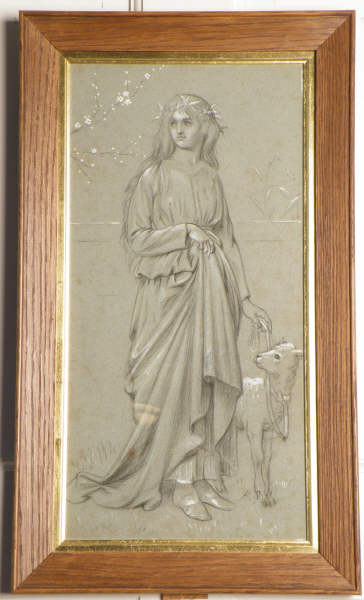
Chalk drawing by Henry Stacy Marks
The tapestry of St Agnes is not the only object in the house to feature a lamb, you can also see one in Henry Stacy Marks’ chalk drawing representing spring from ‘The Seasons’ in the Billiard Room.





